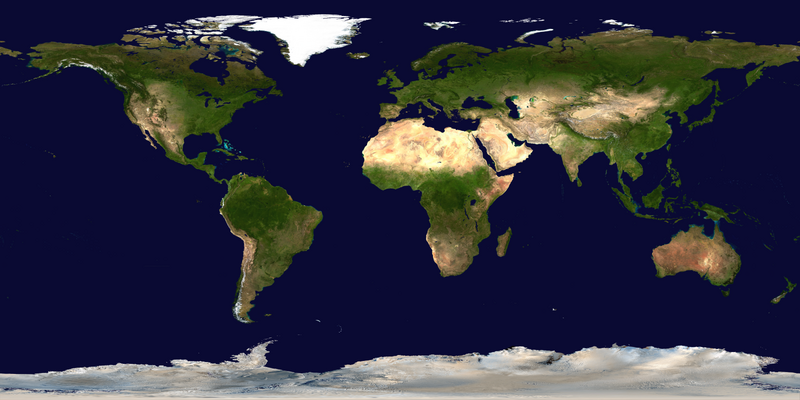File:Blue Marble 2002.png

Nea wohwɛ yi ne tibea: 800 × 400 pixels. resolutions: 320 × 160 pixels | 640 × 320 pixels | 1,024 × 512 pixels | 1,280 × 640 pixels | 2,560 × 1,280 pixels | 43,200 × 21,600 pixels. Foforɔ
Krataa no ankasa (43,200 × 21,600 pixels, file size: 529.58 MB, MIME type: image/png)
Kratafa ne ho abakɔsɛm
Mia ɛda/berɛ no so na hwɛ sɛnea krataa no baeɛ wo saa berɛ nom
| Da/Mmere | Tɔfabɔ | Akwan ahodoɔ | Odwumdini | Adwenkyerɛ | |
|---|---|---|---|---|---|
| nea ɛkɔ so | 10:34, 23 Kitawonsa 2023 |  | 43,200 × 21,600 (529.58 MB) | Gioppolognomo | Reverted to version as of 11:53, 5 August 2016 (UTC) |
| 10:28, 23 Kitawonsa 2023 |  | 5,400 × 2,700 (41.8 MB) | Gioppolognomo | ||
| 11:53, 5 Ɔsanaa 2016 |  | 43,200 × 21,600 (529.58 MB) | Meow | c:User:Rillke/bigChunkedUpload.js: |
Nkrataa a wɔde di dwuma
Nea ɛdidisoɔ yi kratafa dwumadie this file:
Nea wiase nyinaa de yɛ adwuma
Wikis a edidi so yi de di dwuma:
- Yɛ de ayɛ adwuma wɔ ar.wikipedia.org
- Yɛ de ayɛ adwuma wɔ bcl.wikipedia.org
- Yɛ de ayɛ adwuma wɔ bn.wikipedia.org
- Yɛ de ayɛ adwuma wɔ en.wikipedia.org
- Earth observation satellite
- World map
- Equirectangular projection
- Wikipedia:Featured pictures thumbs/04
- User talk:Nnfolz
- Wikipedia:Featured pictures/Space/Looking back
- Talk:Fishing vessel
- User:Huggums537
- Template talk:GeoTemplate/Archive 15
- Wikipedia:Featured picture candidates/delist/2020
- Wikipedia:Featured picture candidates/delist/Blue Marble
- User:GTAVCV20022013
- User:Hurricane Noah/TCMap/Current
- User:Hurricane Noah/TCMap
- User:Hurricane Noah/TCMap/Maps
- User talk:HighInBC/Archive 83
- User:LoekVV
- Portal:World
- Wikipedia:Picture of the day/January 2023
- User:SuperPentagonAnimations/sandbox
- Wikipedia talk:WikiProject Weather/Colour discussions
- Template:POTD/2023-01-11
- Wikipedia:Main Page history/2023 January 11
- Wikipedia:Main Page history/2023 January 11b
- Yɛ de ayɛ adwuma wɔ en.wikibooks.org
- Yɛ de ayɛ adwuma wɔ fa.wikipedia.org
- Yɛ de ayɛ adwuma wɔ fr.wikipedia.org
- Yɛ de ayɛ adwuma wɔ ha.wikipedia.org
- Yɛ de ayɛ adwuma wɔ he.wikipedia.org
- Yɛ de ayɛ adwuma wɔ it.wikibooks.org
- Yɛ de ayɛ adwuma wɔ mk.wikipedia.org
- Yɛ de ayɛ adwuma wɔ pnb.wikipedia.org
- Yɛ de ayɛ adwuma wɔ th.wikipedia.org
- Yɛ de ayɛ adwuma wɔ tr.wikipedia.org
- Yɛ de ayɛ adwuma wɔ tum.wikipedia.org
- Yɛ de ayɛ adwuma wɔ ur.wikipedia.org
- Yɛ de ayɛ adwuma wɔ vi.wikipedia.org







